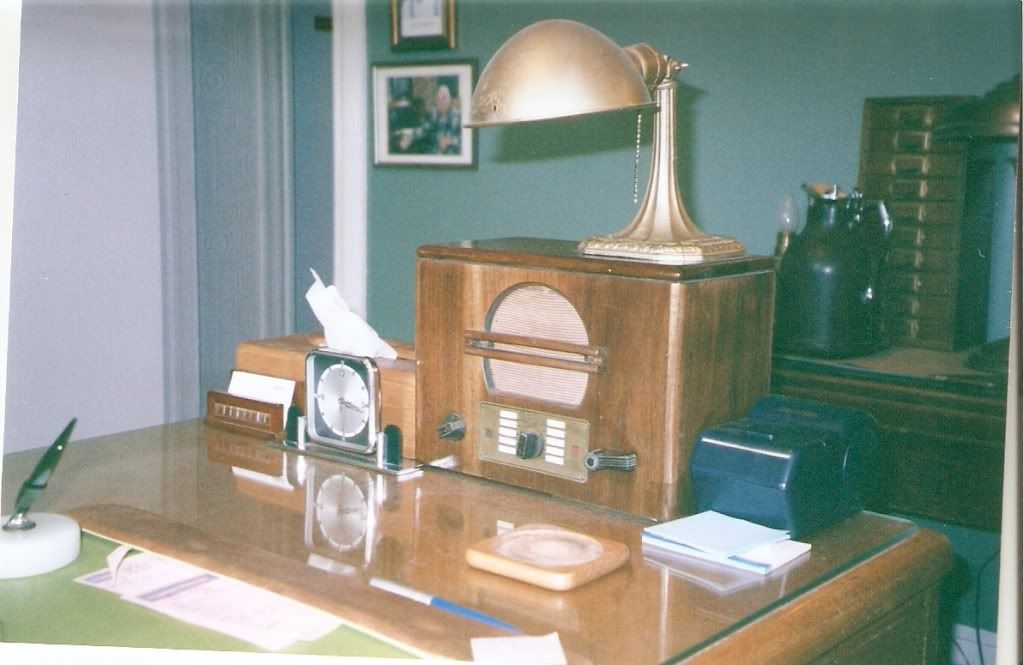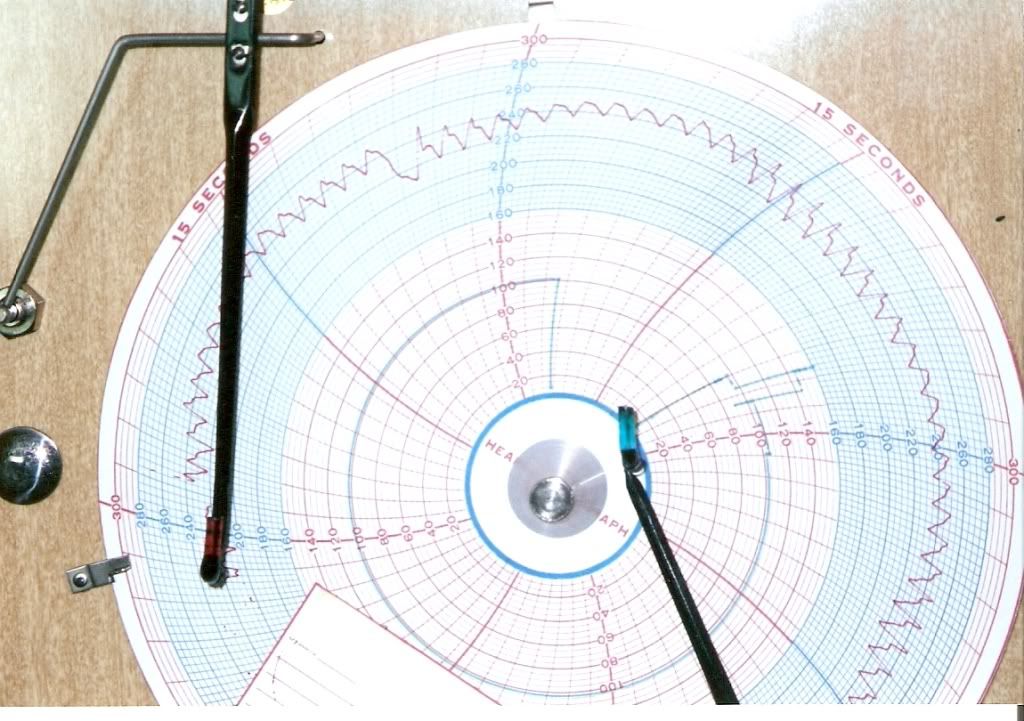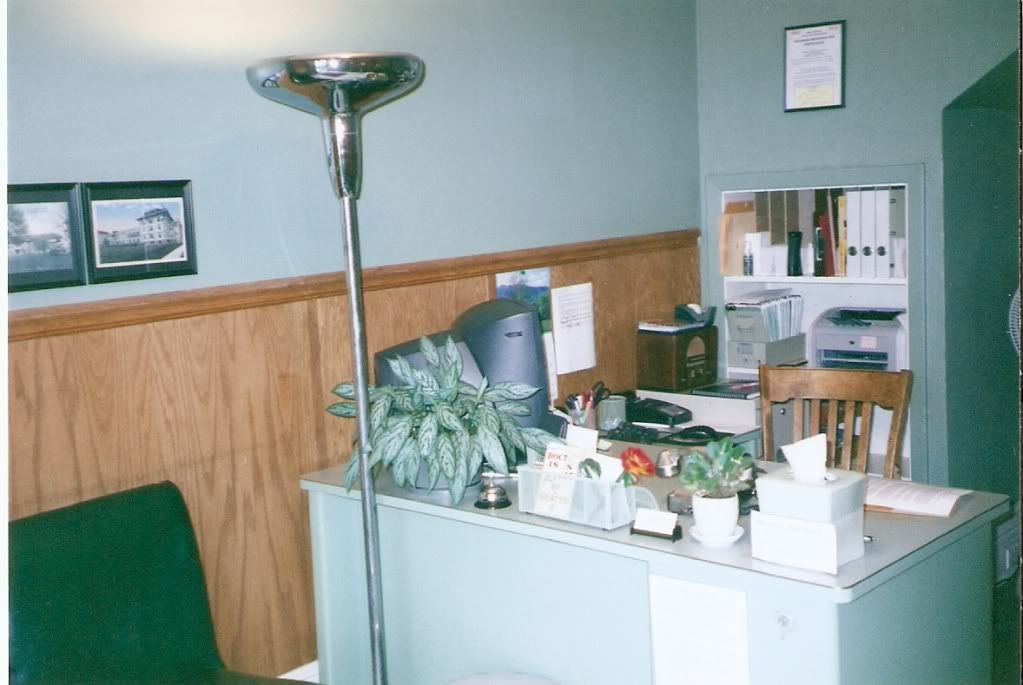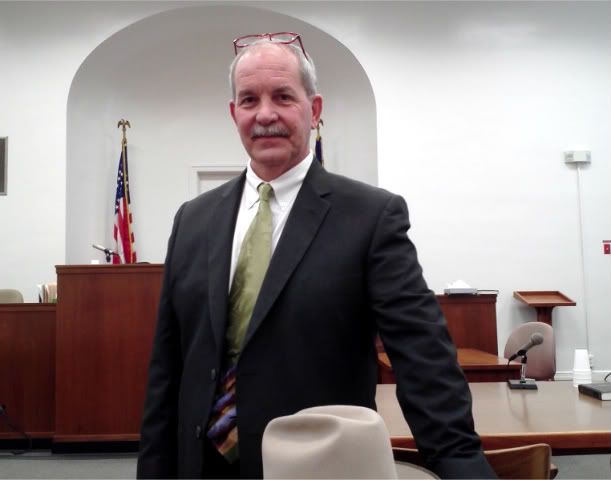docneg
One of the Regulars
- Messages
- 191
- Location
- Pittsburgh PA
Does anyone else here have a “retro” workspace? I have seen threads about people’s home offices but I don’t think I have seen any pictures of anyone’s real work environment. For me, the way my work environment looks and feels is very important for me to do my best work, and when I left a group practice and modern office building years ago, I knew I would never go back.
May I give you a little tour and hopefully spark some others to post their pictures?
Our office now is in a four-story house built in 1897 by a doctor for his residence and office. Now it is my residence and office as well. As you enter my private office, you will see (if you’re looking down) the beautiful cherry and walnut inlay pattern in the virgin white oak floor.

No skinny little mini-blinds for me.

My little Philco. You can guess what kind of music is usually playing.

Twin carved lions flank the fireplace behind my desk. Sorry these are not high-resolution photos.

My precious Western Electric 202 (yes, it’s functional).

The Webster Teletalk intercom connects me with the receptionist.

In an exam room, you will notice the floor model mercury blood pressure gauge—easy to use, accurate, and may I say somewhat stately. The aneroid models have to be calibrated every so often, and I have thrown away every electronic sphyg I have ever tried—they simply are unreliable. Yet the old Baum sealed mercury unit never needs calibrating, only replacement tubing and bladder every now and then.

Below is an oscillometric cardiograph. This type of cardiography, also called “ballistic” cardiography, is extremely valuable as it can be used not only to get a heart tracing, but can measure peripheral circulation as well. By measuring the ballistic forces of cardiac contraction and blood ejection, we can get a very good picture of the cardiovascular integrity of the whole body.
In one minute’s time, without sticking any electrodes to the chest, one can get blood pressure, pulse rate, heart rhythm tracing, and—unlike the ECG—charts it for a full minute (unlike the common fifteen-second rhythm strip). So when someone presents with a change in rhythm only every 30th beat, we catch it.
The Cameron Heartometer was widely used in both hospitals and private physicians’ offices, and was typically preferred over the ECG (EKG) by osteopathic physicians. It was manufactured from the 1930s until around 1979. This is a ‘70s model. In case you’re wondering, our electrocardiograph is tucked away across the room and rarely has needed using.

Here you can see what a graph looks like. Without any training, I am sure you can see that this person has some irregularities in rhythm and amplitude of the heart tracing—the missed beat is obvious.

My receptionist’s desk, with the exception of the computer monitor, is only modern in the 1950s sense.

I am going on about this to illustrate what I am sure many of you are obliged to tell people quite often: I don’t have these things because they’re antiques; I have them because they are beautiful and well-made, and do a better job than their modern counterparts. By the way, our patients love the place.
Anyone else out there?
Docneg
May I give you a little tour and hopefully spark some others to post their pictures?
Our office now is in a four-story house built in 1897 by a doctor for his residence and office. Now it is my residence and office as well. As you enter my private office, you will see (if you’re looking down) the beautiful cherry and walnut inlay pattern in the virgin white oak floor.

No skinny little mini-blinds for me.

My little Philco. You can guess what kind of music is usually playing.

Twin carved lions flank the fireplace behind my desk. Sorry these are not high-resolution photos.

My precious Western Electric 202 (yes, it’s functional).

The Webster Teletalk intercom connects me with the receptionist.

In an exam room, you will notice the floor model mercury blood pressure gauge—easy to use, accurate, and may I say somewhat stately. The aneroid models have to be calibrated every so often, and I have thrown away every electronic sphyg I have ever tried—they simply are unreliable. Yet the old Baum sealed mercury unit never needs calibrating, only replacement tubing and bladder every now and then.

Below is an oscillometric cardiograph. This type of cardiography, also called “ballistic” cardiography, is extremely valuable as it can be used not only to get a heart tracing, but can measure peripheral circulation as well. By measuring the ballistic forces of cardiac contraction and blood ejection, we can get a very good picture of the cardiovascular integrity of the whole body.
In one minute’s time, without sticking any electrodes to the chest, one can get blood pressure, pulse rate, heart rhythm tracing, and—unlike the ECG—charts it for a full minute (unlike the common fifteen-second rhythm strip). So when someone presents with a change in rhythm only every 30th beat, we catch it.
The Cameron Heartometer was widely used in both hospitals and private physicians’ offices, and was typically preferred over the ECG (EKG) by osteopathic physicians. It was manufactured from the 1930s until around 1979. This is a ‘70s model. In case you’re wondering, our electrocardiograph is tucked away across the room and rarely has needed using.

Here you can see what a graph looks like. Without any training, I am sure you can see that this person has some irregularities in rhythm and amplitude of the heart tracing—the missed beat is obvious.

My receptionist’s desk, with the exception of the computer monitor, is only modern in the 1950s sense.

I am going on about this to illustrate what I am sure many of you are obliged to tell people quite often: I don’t have these things because they’re antiques; I have them because they are beautiful and well-made, and do a better job than their modern counterparts. By the way, our patients love the place.
Anyone else out there?
Docneg




